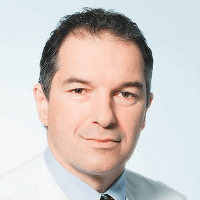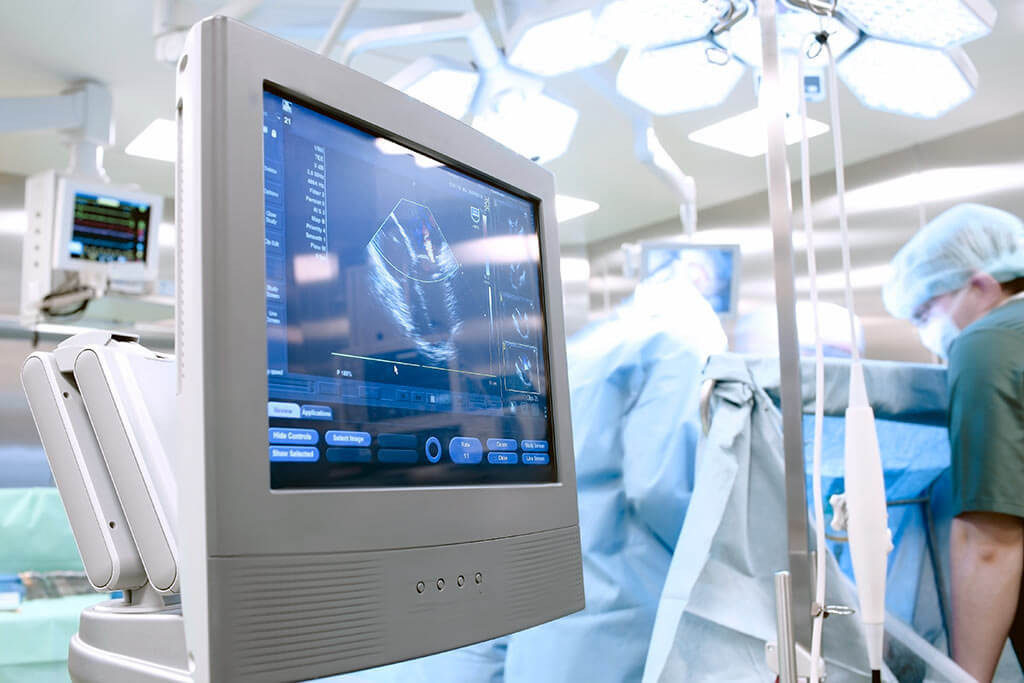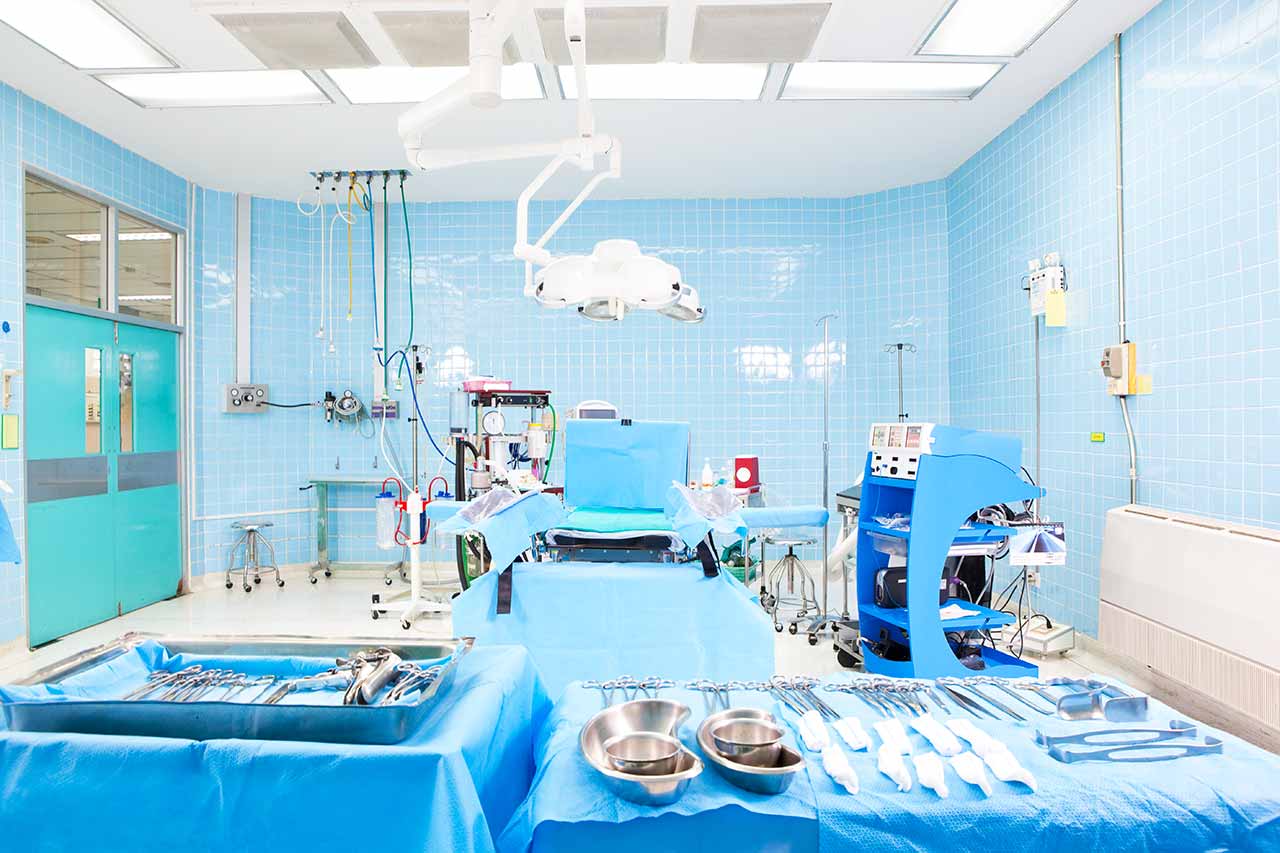
The program includes:
- Initial presentation in the clinic
- clinical history taking
- physical examination
- review of medical records
- laboratory tests:
- complete blood count
- general urine analysis
- biochemical analysis of blood
- indicators of inflammation (CRP, ESR)
- indicators blood coagulation
- x-ray examination of the hip
- MRI scan of the hip
- preoperative care
- hip replacement (hip endoprosthesis)
- symptomatic treatment
- control examinations
- physiotherapeutic procedures
- orthopedic appliances
- the cost of essential medicines and materials
- nursing services
- full hospital accommodation
- explanation of future recommendations
The program includes orthopedic rehabilitation:
- Primary presentation in the clinic
- medical history, including family history
- complex neurological and orthopedic examinations
- X-ray examination
- complex neurophysiological examinations
- individual rehabilitation program, which includes:
- Wii Fit training in the use of the balance
- neuropsychological therapy
- functional therapy of the upper extremities (ArmeoSpring)
- kinesitherapy (physiotherapy)
- biocontrol with feedback
- healing deep muscle massage
- acupuncture of spasticity and pain syndromes
- occupational therapy
- psycho-educational classes
- Individual physiotherapy
- microcurrent treatment
- fangotherapy / cryotherapy
- antispasmodic drug therapy
- mobilization of limb joints
- hydrotherapy / massage therapy / reflexology
- training on special trainers
- and etc.
- nurses care
- stay in the hospital with full board
- symptomatic and drug therapy
How program is carried out
Preliminary preparation for hip replacement includes quitting smoking and drinking alcohol; cancelling non-steroidal anti-inflammatory drugs (diclofenac, ibuprofen); cancelling anticoagulants (warfarin); normalization of body mass, if possible.
Preoperative examination, including consultation with an anesthesiologist and necessary related specialists, takes 1-2 days. According to its results, the most suitable endoprosthesis is selected.
Hip replacement. The operation is performed under general anesthesia. The patient lies on his side, the affected leg is bent and fixed in this position. The surgeon makes an incision 15-20 cm long, minimally traumatizing the muscles and nerve endings. Through this incision, miniature instruments are inserted to remove the damaged joint structures. Healthy bone is adjusted for further reliable implant fixation.
The surgeon installs a femoral stem in the center of the upper part of the femur. Ball-shaped head of the joint is fixed on it. The surgeon also implants a special liner that facilitates movement of the leg and protects the structures of the prosthesis. After the primary fixation of the prosthesis components, the doctor assesses the joint range of motion, as well as the length and symmetry of the lower limb.
The implant is fixed with cement or cementless method. The doctor treats the operating field with antiseptics, conducts its final revision and sutures the wound layer by layer. A temporary drainage is installed in the joint, and a bandage is applied on top.
Postoperative care. During the first day after the intervention the patient stays in the intensive care unit, under round-the-clock medical supervision. After that, with a smooth course of the postoperative period, the patient is transferred to a regular ward and the drains are removed. The range of motion expands gradually, from light toes movements to walking. Walking with the use of walking aids is allowed in 3-5 days after the operation.
Rehabilitation. The rehabilitation program begins after the transfer of the patient from the intensive care unit to a regular ward. It includes physical activity (from exercises in bed in the early days to exercises in the gym), physiotherapy, massage (including lymphatic drainage), exercises in the water. The rehabilitation program is constantly being adjusted according to the needs of the patient.
Required documents
- X-ray examination of the hip joints
- MRI scan of the hip joints, if available
Service
You may also book:
 BookingHealth Price from:
BookingHealth Price from:
About the department
The Department of Adult and Pediatric Traumatology, Orthopedics, Foot Surgery, Hand Surgery and Reconstructive Surgery at the Hospital Harlaching Munich offers the full range of diagnostic and therapeutic services in the areas of its specialization. The doctors of the medical facility provide both conservative and surgical treatment. The department is distinguished by its exceptional competence in the treatment of injuries of any severity, including multiple injuries. The department is certified in accordance with the requirements of the German Trauma Society (DGU). The key focus of clinical practice is also on the treatment of such spinal diseases as spinal disc herniation, spondylolisthesis, osteochondrosis, spondyloarthritis, osteoporotic vertebral fractures, spinal stenosis, spinal fractures, etc. In addition, the department's specialists can boast of their rich and successful experience in joint replacement surgery. The medical facility performs operations to replace knee, hip, shoulder, elbow and ankle joints, including revision interventions. The department's therapeutic options are complemented by the correction of congenital and acquired foot deformities, hand surgery. The department annually performs more than 3,000 interventions, while about 600 of them are spinal surgical procedures. The Chief Physician of the department is Prof. Dr. med. Georg Gradl.
The department often admits patients with suspected spinal disc herniation. During the initial consultation, the doctor attentively listens to the patient's complaints, studies his medical history, carries out clinical examination and prescribes a set of diagnostic tests. X-rays and magnetic resonance imaging are usually required to confirm the diagnosis. After receiving diagnostic results, the attending physician develops the optimal treatment regimen. In 90% of clinical cases, the department's orthopedists manage to avoid surgery and achieve a good result with the help of such conservative treatments as pain therapy with pills, injection pain therapy and physiotherapy. Surgical treatment is usually indicated for patients with large hernias, for patients with urinary incontinence and rectal lesions, as well as for patients with movement disorders due to disc herniation. The decision to perform surgery is made cooperatively by orthopedists, traumatologists and neurosurgeons. In most cases, the surgical procedures are performed using sparing minimally invasive techniques, which greatly facilitate the patient's postoperative recovery.
Spondylolisthesis is also a fairly common spinal disease, and the department's doctors can be proud of the successful therapeutic results in this field. To make a diagnosis, the doctor performs a clinical examination, X-ray scanning and magnetic resonance imaging. In some cases, CT and functional MRI scans are also required. The first-line treatment for spondylolisthesis is pain therapy (local X-ray-guided injections of drugs). The next step after the elimination of pain is strengthening of the muscles of the back using a special complex of exercises and physiotherapy. If several months of conservative treatment do not lead to an improvement in the patient's health condition, the specialists make a decision to perform surgery. The main surgical treatment technique for spondylolisthesis is spondylodesis, which involves immobilization of the adjacent vertebrae by their fusion. The department's surgeons have vast experience in this intervention, so patients can count on an effective result.
The treatment of injuries, including sports ones and polytrauma, is of particular interest to the department's specialists as well. The department enjoys the status of the supraregional Trauma Center and has a quality certificate from the German Trauma Society, which requires a professional team of trauma surgeons, high-tech equipment and a high level of quality of medical care. The patients can receive medical care around the clock. The department has an emergency service, two progressive anti-shock rooms and a helipad for the urgent transportation of severely injured patients. The trauma surgeons mostly use conservative treatments, while surgery is the last-line therapy.
The department is also distinguished by its special competence in the field of joint replacement surgery. It performs operations to replace knee, hip, shoulder, elbow and ankle joints. The department's surgeons specialize in primary joint replacement surgery and revision interventions to replace previously implanted prostheses. With the department's state-of-the-art medical equipment, the doctors can perform most joint replacement surgeries using minimally invasive techniques. The patient can recover mobility after surgery as soon as possible. The endoprosthesis is selected for each patient individually, taking into account his anatomical features and the severity of joint damage. It should be noted that the department's doctors use in their clinical practice only high-quality prostheses from the world's leading manufacturers with a long service life.
The department's therapeutic options are complemented by the treatment of foot diseases and deformities. In collaboration with vascular surgeons, the department's doctors provide treatment to the patients with diabetic foot syndrome. At the initial stages of such deformities, it is possible to conduct conservative treatment using special orthopedic devices and physiotherapy, but in case of severe deformities, the patient should undergo surgery. Whenever possible, the surgeons use minimally invasive surgery.
Hand surgery is also within the competence of the department's doctors. The specialists in this field deal with the treatment (usually surgical) of ganglion cysts, tenosynovitis, nerve compression syndromes, Dupuytren's contracture, hand fractures and burns. The department's medical team cooperates closely with vascular and plastic surgeons.
The department's main clinical focuses include:
- Conservative and surgical treatment of injuries, including severe ones and polytrauma, in adults and children
- Conservative and surgical treatment of sports injuries (for example, ligament tears, meniscus injuries, rotator cuff tears, shoulder dislocations)
- Total and partial knee, hip, shoulder, elbow and ankle replacement surgery, including revision interventions to replace previously implanted prostheses
- Conservative and surgical treatment of spinal diseases
- Herniated discs
- Osteochondrosis
- Spondylolisthesis
- Spondylarthrosis
- Spinal stenosis
- Osteoporotic vertebral fractures
- Conservative and surgical treatment of foot diseases and deformities
- Hallux valgus
- Hallux rigidus
- Hammer and claw fingers
- Heel spur
- Haglund's deformity
- Conservative and surgical treatment of hand diseases and injuries
- Ganglion cysts
- Tenosynovitis
- Nerve compression syndromes
- Dupuytren's contracture
- Hand fractures and burns
- Other medical services
Curriculum vitae
Higher Education and Professional Career
- Study of Human Medicine at Ludwig Maximilian University of Munich.
- 1995 Assistant Physician in the Department of Traumatology at the University Hospital Grosshadern.
- 1998 Doctoral thesis defense, one-year internship in traumatology, University Hospital Basel.
- Since 2000 Participation in the opening of the Department of Traumatology at the University Hospital Rostock – as of today, the department is a supraregional Maximum Care Center.
- 2006 Habilitation at the Faculty of Medicine, University of Rostock.
- 2011 Professorship.
- Since 2014 Chief Physician of the Department of Adult and Pediatric Traumatology, Orthopedics, Foot Surgery, Hand Surgery and Reconstructive Surgery at the Hospital Harlaching Munich.
Clinical Interest
- Medical care for severe injuries.
- Pelvic surgery.
- Spinal surgery (special focus on the use of minimally invasive surgical techniques).
- Reconstructive surgery for foot deformities.
- Joint replacement surgery.
- Treatment of sports injuries.
- Treatment of traumas in the elderly.
Research Interests
- Bone tissue regeneration in elderly patients.
- Modern joint replacement techniques, taking into account the age factor.
Awards and Honors
- 2015 First Poster Award (Senior Author), Annual Congress of Orthopedics and Orthopedic Surgery, Berlin. Subject: "Surgical treatment of distal radius fractures, analysis of dorsal displacement and function".
- 2015 First Poster Award (Senior Author), Hamburg. Subject: "The role of minimal nerve damage in an animal model of a rat with post-traumatic reflex sympathetic dystrophy".
- 2011 Poster Award (Co-Author), Dresden. Subject: "Charcot arthropathy: an analysis of complications".
- October 2010 Evidence-Based Medicine Award (Senior Author), Annual Congress for Orthopedics and Orthopedic Surgery, Berlin. Subject: "Surgical treatment of distal radius fractures using an intramedullary device – data from a prospective randomized one-year research".
- September 2008 Klaus Klemm Innovation Award in the field of minimally invasive treatment of distal radius fractures, International Congress for Osteosynthesis, Berlin.
- August 2006 "Venturesail" Award (60,000 €).
Memberships in Professional Societies
- Association of German Surgeons.
- German Trauma Society.
- German Society of Plastic, Reconstructive and Aesthetic Surgeons.
- German AOTrauma Academy.
- Küntscher Society (President).
Photo of the doctor: (c) München Klinik Harlaching
About hospital
According to the prestigious Focus magazine, the Hospital Harlaching Munich ranks among the top 20 medical centers in Bavaria, and is also one of the 100 best hospitals in Germany!
The medical complex provides top-class medical care, which meets modern European standards. The medical facility is an Academic Hospital of the Ludwig Maximilian University of Munich, thanks to which it has access to the very latest clinical achievements. The hospital is proud of its large bed capacity, which accounts for more than 700 beds. The doctors of the medical complex annually provide treatment to over 79,000 patients both on an inpatient and outpatient basis. The work of the hospital's medical team is based on an individual approach to each patient, since each patient and his clinical case are unique. The specialists develop individual medical programs, which allow them to achieve complete cure even in particularly complex clinical cases.
The hospital includes 17 specialized departments and many narrowly focused centers, including the Trauma Center, Breast Center, Gynecologic Cancer Center, Level I Perinatal Center, etc. The priority clinical activities of the medical facility include traumatology, neurology, gynecology and obstetrics, oncology, urology, pediatric and adolescent medicine. In addition, the doctors of the medical complex have long experience in the treatment of diseases of the cardiovascular system, kidneys and urinary tract, diseases of the gastrointestinal tract and lungs.
The hospital has been awarded the prestigious DIN EN ISO 9001:2015 certificate, which confirms the excellent quality of medical services and high patient satisfaction with medical care. The successful clinical activities of the hospital are also awarded with certificates from the German Cancer Society, the German Cardiac Society, the German Stroke Society, the German Trauma Society, the German Hernia Society and other specialized medical associations.
The patients of the hospital benefit from medical care by leading doctors in Germany with rich practical experience and excellent qualifications. The specialists devote enough time to personal communication with patients, strive to establish trust with them and do everything possible to ensure not only a successful treatment outcome, but also a pleasant stay in the hospital.
Photo: (с) depositphotos
Accommodation in hospital
Patients rooms
The patients of the Hospital Harlaching Munich live in comfortable single and double rooms with light colors. Each patient room has an ensuite bathroom with shower and toilet. The standard patient room furnishings include an automatically adjustable bed, a bedside table, a wardrobe, a table and chairs for receiving visitors. The bed has a built-in modern multimedia system with the help of which the patient can control the TV and radio. In addition, the multimedia system can be used to make telephone calls. Wi-Fi access is also available in the hospital. There is a ban on smoking in the hospital.
The patients can also live in enhanced comfort rooms. These patient rooms have additional toiletries, towels, hairdryer, safe, mini-fridge and upholstered furniture.
The hospital has a library with a wide selection of books for every taste, including audio books, magazines, DVDs and CDs.
The hospital also has a cozy cafe where the patients can have a tasty snack, enjoy a cup of aromatic coffee or hot tea with dessert.
Meals and Menus
The patient and the accompanying person are offered tasty and healthy three meals a day. The diet is quite varied. The restaurant of the hospital is certified in accordance with the DIN ISO 22000: 2005 quality standards, so the patients can be sure that when cooking the chefs use only the freshest and highest quality products.
If you are on a specific diet for some reason, you will be offered an individual menu. Please inform the medical staff about your dietary preferences prior to the treatment.
Further details
Standard rooms include:
Religion
The religious services are available upon request.
Accompanying person
During the inpatient program, the accompanying person can live with the patient in a patient room or a hotel of his choice. Our managers will help you choose the most suitable option.
Hotel
During the outpatient program, the patient can stay at the hotel of his choice. Our managers will help you choose the most suitable option.




